Ernie Mason remembers that growing up, helping his parents break in their farm, he was always a kid for the bush… always hunting. Its a love that’s stayed with him throughout his working life. At 72 years old Ernie is still going strong, working around 15 days per month as biosecurity ranger at Mamaku Point Conservation Reserve on Rakiura/Stewart Island.
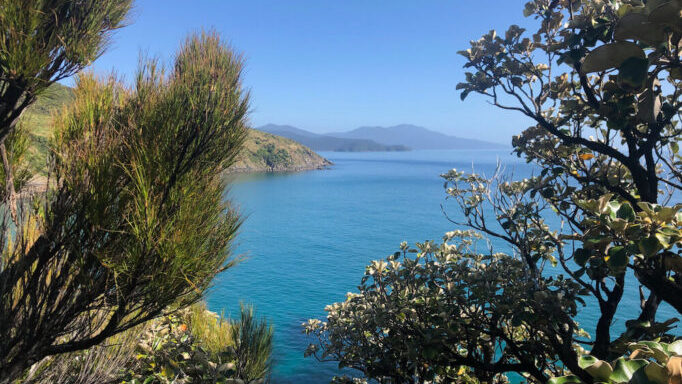
“There are about 630-650 bait stations on the reserve, and they get fresh bait and poison every month,” Ernie explains. “I also do other work on the reserve, building and maintaining tracks.”
Ernie’s conservation working life began way back in 1967 when he first went deer culling near Te Anau.
“We were working in Takahe Country – the Murchison Mountains,” he says. “We’d go into the bush in September and come out in May. There were no locator beacons back then and no radios. You got fresh meat by hunting and there would be air drops of supplies to the main huts. We’d work from hut to hut with sometimes 2…3…5 days between huts. I used to regret coming out and finishing up.”
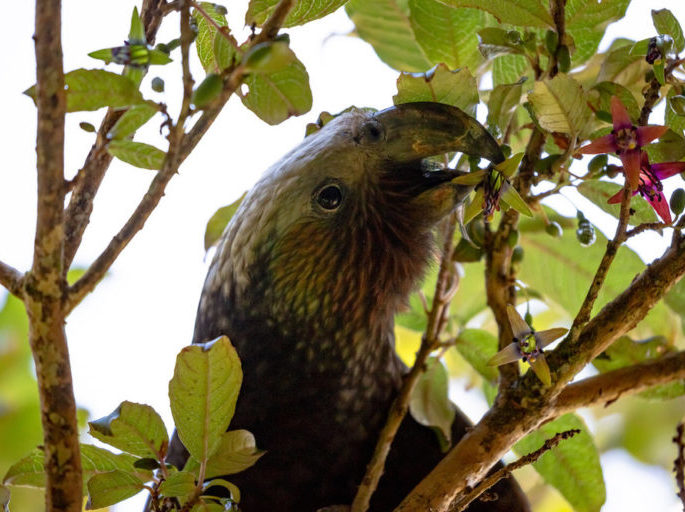
Mamaku Point offers a slightly easier working environment – but it can be pretty rugged and steep in parts too. It’s a 172-hectare headland just 4 kilometres from the Oban township and includes some of the oldest podocarp forest in New Zealand. A 2.1-kilometre biosecurity fence was erected to protect the area back in 2005.
Ernie has been pursuing predators there, pretty much since the fence was erected, initially as an employee of Adrian Gutsell of ‘Contract Wild Animal Control’ and more recently employed directly by the Mamaku Point Conservation Trust.
“The biggest job now is predator control in the buffer zone outside the fence. You can’t just stay inside the protected area. The further back you go from the fence the better, but you have to balance the cost,” he says.
Rakiura/Stewart Island has never had stoats, fortunately, but there are deer and feral cats outside the fence and a small number of rats still inside it.
“The whole time I’ve been here its not been completely predator free,” says Ernie. “I try to understand the rats so Mamaku can become predator free, but it’s difficult.”
Ernie has learnt a thing or two about rats, however, in his lifetime working in the bush.
“People think rats are dirty, but they’re actually quite clean animals,” he explains. “They go for fresh clean food. I study what they’re eating at the time and if its sour, use a sweet bait for example. You need to understand rats and the type of rat you’ve got. I’ve learnt a lot off Landcare Research.”
Ernie mostly uses peanut butter as a lure, but there’s peanut butter and there’s PEANUT BUTTER!
“I use crunchy rather than smooth – because its got the actual peanuts in it,” he says. “But with modern technology you can now get concentrated peanut butter in a spray can. It’s very good. If you spray it on the plastic bait station, the rats will eat the plastic. You can also get peanut butter bait blocks. But rats will eat any food – even fat can be used. There’s no great secret – you just need to keep at them.”
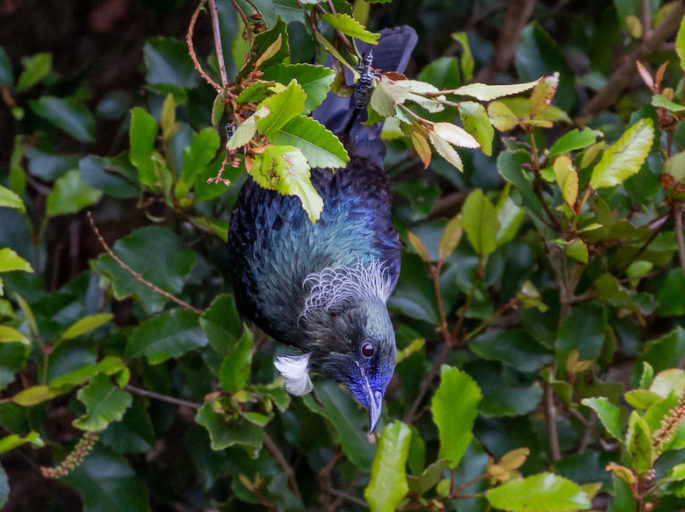
Rat numbers are seasonal and there aren’t a lot around at the moment even outside Mamaku’s borders.
“In the dry weather they’ll breed up again and when the grasses are seeding the rats will get the seeds and not be interested in lures. A lot of lures don’t work until the food comes down. Then the cats will start breeding up, with the rats as their food source. So to become predator free you have to take down all the predators at once or the cats will devastate the birds.”
There are only a few rats within the protective fence at Mamaku.
“The main problem is that we aren’t allowed to extend the fence into the sea, so at low tide the rats can walk around,” Ernie explains. “There are no possums here though, as we’ve got a very good rat/possum detecting dog – a foxy – it’s brilliant at catching possums outside the fence.”
Local birds also know the difference between the inside of the fence and the outside, from what Ernie has observed.
“Inside the fence the birds are on the ground all over the place,” he says. “Outside the fence, the birds are only in the trees.”
There are at least 26 native bird species found within Mamaku Point Conservation Reserve, including a thriving population of the Stewart Island tokoeka/kiwi. Invertebrates, native plants and beautiful fungi thrive there too and local ecotour companies bring visitors there for kiwi spotting walks and, sometimes also for medicinal and edible plant tours.
The property has had several different owners over the years. Prior to November 2000 the property was privately owned and managed as a farm by the Turnbull family, with the seaward faces used for sheep and cattle grazing, while the higher inland areas remained as native bush. In November 2000 the Dancing Star Foundation purchased the property with a vision to establish a world class biosecurity preserve for native flora and fauna, then in 2017, the reserve was purchased by a family trust associated with Roy and Rachel Thompson. Roy and Rachel established the Mamaku Point Conservation Trust in order to engage the wider community in their biodiversity, education and sustainability objectives for the reserve.
“We split our time between Auckland and Arrowtown but also spend a lot of time on Stewart Island in the school holidays,” says Rachel. “We come down for family holidays and Roy has been coming here hunting with school friends for 35 years.”
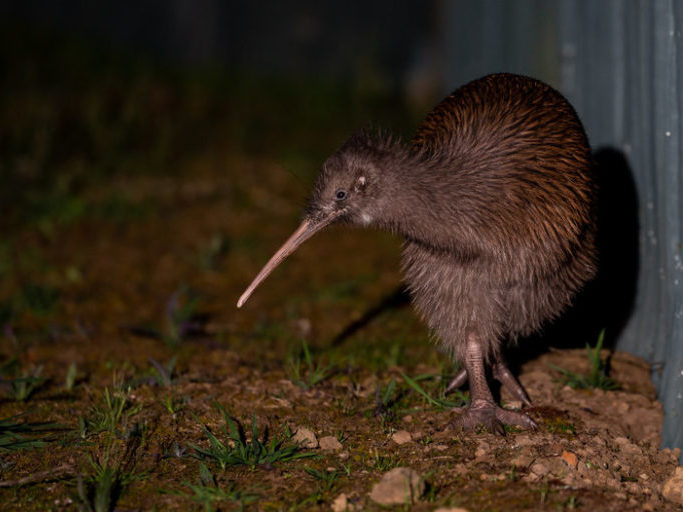
Rachel and Roy saw the reserve was for sale back in 2017, with no protections in place and wanted to continue the protection that the previous United States-based owners had begun.
“It’s a coastal peninsula reaching about 120 metres above sea-level in height with very steep slopes. Whilst it was farmed, the old forest was not milled and there are ancient rimu, rata and miro – beautiful, massive big trees!”
The predator and deer-proof fence has ensured regeneration of the understorey too.
“The regeneration inside the fence is amazingly different to the outside, without the deer and possum browsing,” says Rachel. “Inside there are fungi and epiphytes – the forest is so healthy without possums.”
Rachel is in awe of the work Ernie does for the Trust.
“Ernie is incredible,” Rachel says. “He works here 15 days a month and reckons he’s going to retire at 80. As well as predator control, he chops firewood and he’s cleared a whole paddock of gorse in his ‘spare time’!”
“Gorse is a ‘predator’,” says Ernie. “Land looks better without that weed. The amount of gorse was horrific when I started. Coming around from Horseshoe Bay you used to look up at a yellow face of gorse – now it’s a pretty green face.”
Ernie reckons gorse isn’t too hard to control – the problem is the survival of seeds in the ground.
“When its young and stiff, gorse is easy to pull out,” he says. “And as long as the ground is in bush its okay, but if the land is cleared, even after 60-70 years, the gorse will still come up again.”
Ernie says he’s got a good job working at Mamaku.
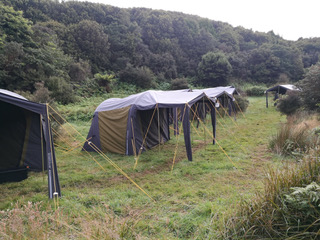
“I really enjoy working with Antony, the reserve manager. We have a special working relationship and Antony is a good guy.”
Rachel agrees.
“We couldn’t do Mamaku Point Conservation Reserve without Antony,” she says. “He is an outstanding manager who goes the extra mile.”
Ernie enjoys his work so much, he has no plans to retire any time soon, even though he’s in his 70s.
“While I’ve still got my youth, I’ll keep going,” he says. “I’ve always kept fit and on the go. When my Dad died aged 70 he was an old man,” he muses. “There’s no way he could do what I’m doing now at 72! It’s a matter of being hard enough, looking after yourself and keeping up your fitness. And this is a tremendous group to work with. Rachel has a great vision for conservation.”
At the moment, Rachel is focussing that vision on a sustainable future for Mamaku Point.
“Our vision is that Mamaku Point will be a healthy, predator free, self-sustaining, indigenous ecosystem where visitors experience nature at its best,” she says. “Our primary goal is to protect as many indigenous species as possible. Our other big goal – beyond conservation – is for the charitable trust to be financially self-sufficient through school camps, eco-tourism and donations – so that the reserve will run itself in future and so protect the conservation goals.”
Those self-sustaining goals are already beginning to happen.
“A local tour company has an eco-tourism night kiwi excursion where they donate $20 per visitor. It’s a perfect partnership,” says Rachel. “Our own children were completely enthralled for 3 hours.”
Otago and Southland schools have been staying at the school campsite since it opened in 2018.
“Queenstown Primary have been coming every year for three years now. Their 3rd visit was just before lockdown and now they’ve just rebooked. John McGlashan College (Dunedin) are on their 2nd year now and Tahuna Intermediate (Dunedin) have just been down for the first time and have rebooked as well.”
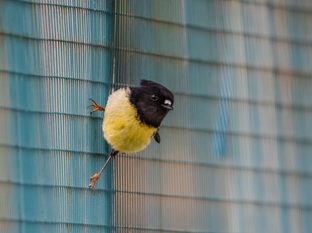
Mamaku Point holds a special magic for Rachel.
“The predator fence has created such an amazing forest with beautiful regeneration. Orchids that were previously only in trees are now growing on the ground and there are kiwi at night near the campsite. The other day I was standing still and a kiwi was snuffling around my gumboots!”
The Trust are also keen to carry out translocations returning native species to the forest, but Rachel admits they need to get more savvy with the processes involved.
“We’re keen to translocate tuatara and are learning how to make a formal application. I’m not from a conservation background but we have fantastic trustees, including Phil Seddon (University of Otago) and Phillip Smith (a local Kaumatua) who give us good advice.”
“Brown creeper and rifleman have both been successfully breeding,” she adds, “But the robins were not so successful. They went back to Ulva Island!”
Find out more about Mamaku Point Conservation Reserve.

